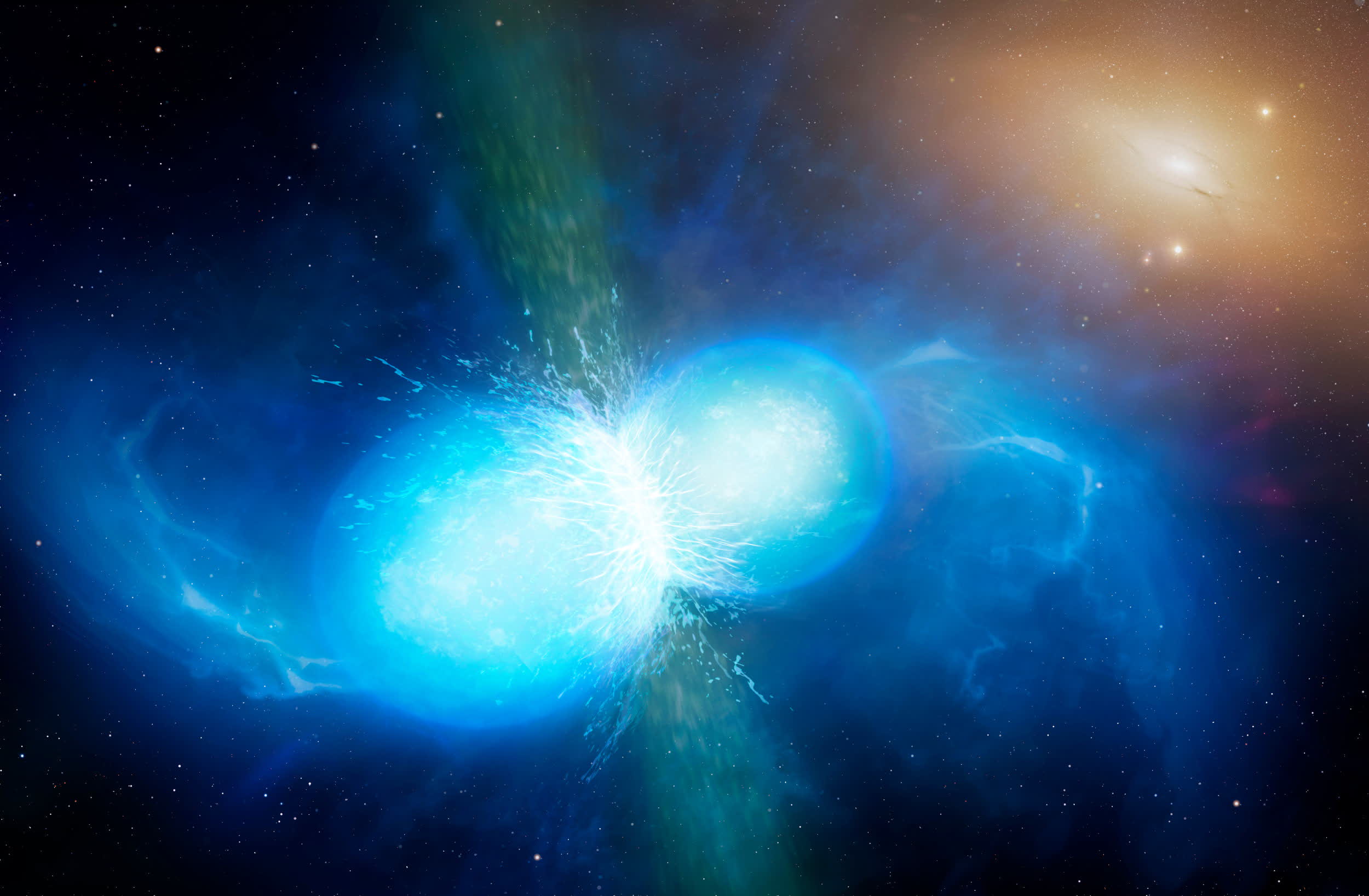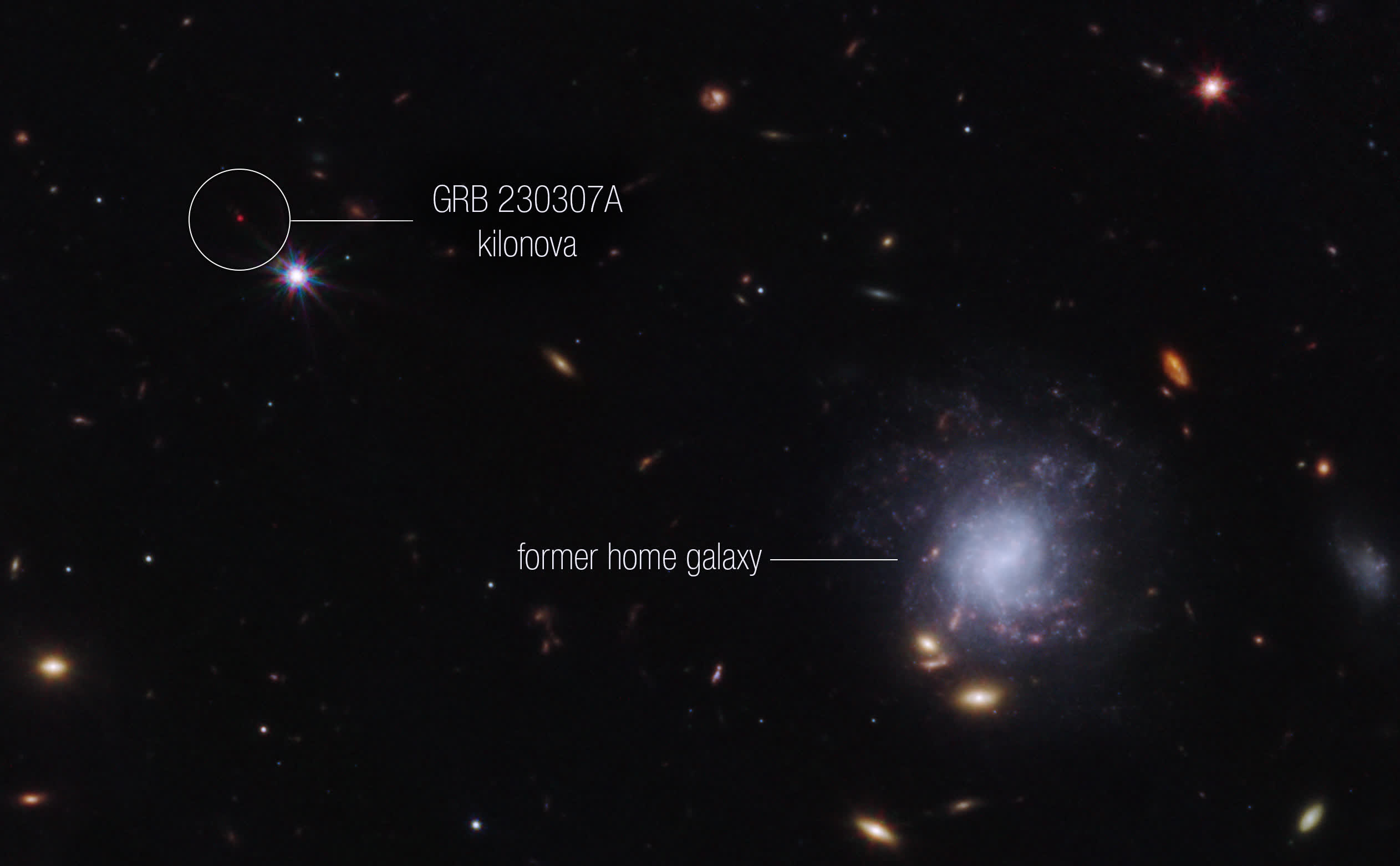Cosmic clash: When a compact neutron star merges with another neutron star or a black hole, it produces a rare and transient astronomical event known as a "kilonova" that generates bright gamma-ray bursts. NASA's James Webb Space Telescope recently observed its first kilonova.
Multiple ground-based telescopes and satellites were employed to detect and observe GRB 230307A, an "exceptionally bright" and rare gamma-ray burst, which NASA believes originated from a kilonova. Two neutron stars traveled from another galaxy before merging, producing heavy elements rarer than platinum on Earth.
A team of scientists studied GRB 230307A using the James Webb Space Telescope, Fermi Gamma-ray Space Telescope, Neil Gehrels Swift Observatory, and other telescopes. Their observations confirmed that the event was indeed a kilonova. Merging two neutron stars is believed to produce short gamma-ray bursts, which last less than two seconds. In contrast, long gamma-ray bursts lasting several minutes are associated with the explosion of massive stars.
The gamma-ray burst (GRB) from GRB 230307A is the second-brightest GRB observed in the past 50 years, as confirmed by NASA, being approximately 1,000 times brighter than a typical gamma-ray burst seen through the Fermi telescope. It was also unusually long, lasting for 200 seconds.
Eric Burns, co-author of the study and a member of the Fermi team at Louisiana State University, confirmed that despite its duration, the gamma-ray emission likely originated from a kilonova-level event.
By utilizing various space and ground-based observatories, scientists gathered sufficient information to piece together the GRB 230307A puzzle. They observed changes in the brightness of the gamma-ray burst and noted that the optical/infrared segment of the electromagnetic spectrum was faint, evolving rapidly and shifting toward the red end.
In terms of near-infrared observations, instruments aboard the James Webb Space Telescope played a pivotal role in discovering crucial details about the kilonova. The orbiting telescope helped scientists pinpoint the source of the binary neutron system, located in a spiral galaxy 120,000 light-years away from the eventual merger site.
Webb also detected emissions originating from tellurium (Te), a metalloid element with atomic number 52. Kilonovae have long been considered as ideal "pressure cookers" for the universe, where rarer elements heavier than iron can be synthesized. GRB 230307A appears to confirm this theory.

